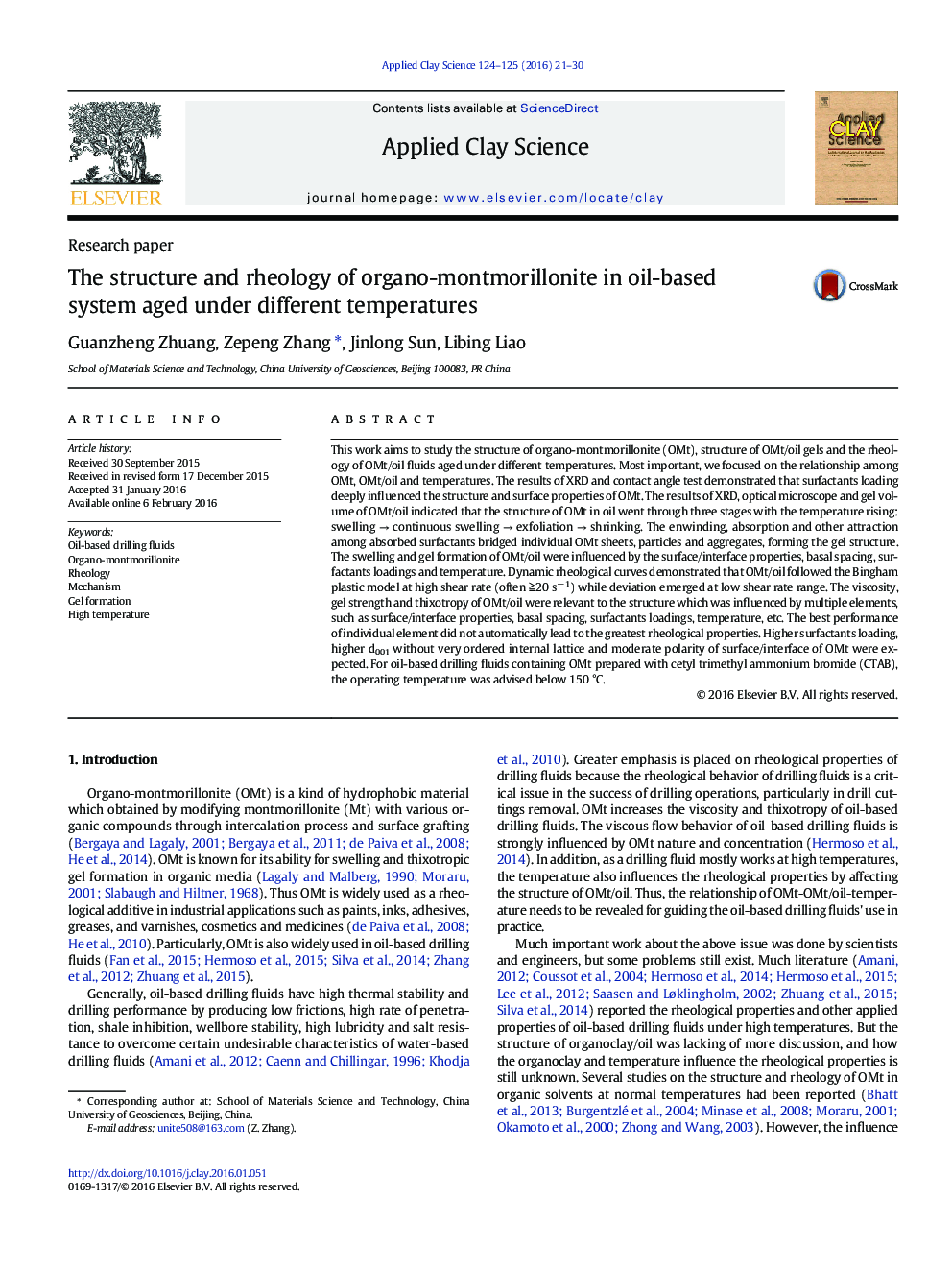| کد مقاله | کد نشریه | سال انتشار | مقاله انگلیسی | نسخه تمام متن |
|---|---|---|---|---|
| 1694078 | 1519060 | 2016 | 10 صفحه PDF | دانلود رایگان |
عنوان انگلیسی مقاله ISI
The structure and rheology of organo-montmorillonite in oil-based system aged under different temperatures
ترجمه فارسی عنوان
ساختار و رئولوژی سازه مونتموریلونیت در سیستم مبتنی بر نفت در دماهای مختلف
دانلود مقاله + سفارش ترجمه
دانلود مقاله ISI انگلیسی
رایگان برای ایرانیان
کلمات کلیدی
مایعات حفاری بر اساس نفت، ارگانو مونتموریلونیت، رئوئولوژی، مکانیسم، تشکیل ژل، درجه حرارت بالا،
موضوعات مرتبط
مهندسی و علوم پایه
علوم زمین و سیارات
ژئوشیمی و پترولوژی
چکیده انگلیسی
This work aims to study the structure of organo-montmorillonite (OMt), structure of OMt/oil gels and the rheology of OMt/oil fluids aged under different temperatures. Most important, we focused on the relationship among OMt, OMt/oil and temperatures. The results of XRD and contact angle test demonstrated that surfactants loading deeply influenced the structure and surface properties of OMt. The results of XRD, optical microscope and gel volume of OMt/oil indicated that the structure of OMt in oil went through three stages with the temperature rising: swelling â continuous swelling â exfoliation â shrinking. The enwinding, absorption and other attraction among absorbed surfactants bridged individual OMt sheets, particles and aggregates, forming the gel structure. The swelling and gel formation of OMt/oil were influenced by the surface/interface properties, basal spacing, surfactants loadings and temperature. Dynamic rheological curves demonstrated that OMt/oil followed the Bingham plastic model at high shear rate (often â§Â 20 sâ 1) while deviation emerged at low shear rate range. The viscosity, gel strength and thixotropy of OMt/oil were relevant to the structure which was influenced by multiple elements, such as surface/interface properties, basal spacing, surfactants loadings, temperature, etc. The best performance of individual element did not automatically lead to the greatest rheological properties. Higher surfactants loading, higher d001 without very ordered internal lattice and moderate polarity of surface/interface of OMt were expected. For oil-based drilling fluids containing OMt prepared with cetyl trimethyl ammonium bromide (CTAB), the operating temperature was advised below 150 °C.
ناشر
Database: Elsevier - ScienceDirect (ساینس دایرکت)
Journal: Applied Clay Science - Volumes 124â125, May 2016, Pages 21-30
Journal: Applied Clay Science - Volumes 124â125, May 2016, Pages 21-30
نویسندگان
Guanzheng Zhuang, Zepeng Zhang, Jinlong Sun, Libing Liao,
